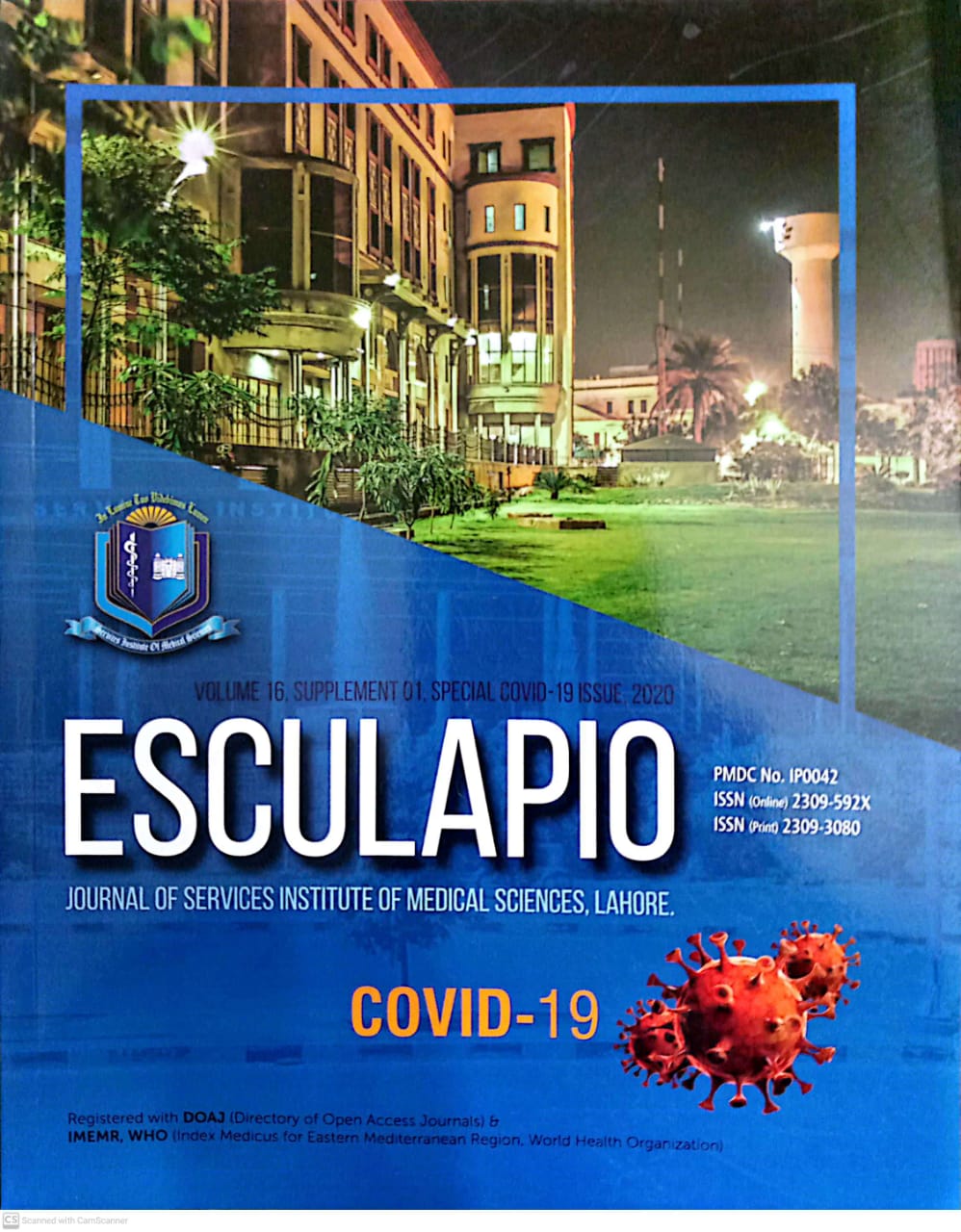To Determine Safety Profile of Azithromycin in COVID-19 Patients: A Cross Sectional Survey
DOI:
https://doi.org/10.51273/esc20.716sp1-covid-11Keywords:
2019-nCoV, Azithromycin, SARS-CoV-2, COVID-19Abstract
Objective: Covid-19 outbreak late in 2019 from Wuhan city of China spread rapidly all over the world and
became a pandemic. Corona Virus is RNA virus, major virus that affects respiratory system and can result in
acute respiratory distress syndrome, so there emerged several management strategies to combat the challenge
of the disease, Azithromycin is one of those treatment options. Azithromycin have been used widely and
generally considered as safe medication. The Purpose of this study was to establish its safety profile in this
new disease in our part of world.
Methods: 80 covid-19 positive in ICU were given Azithromycin along with other standard treatment, Side
effects were divided into mild serious and allergic reactions. These were noted down in pre designed
proforma. Data analysis was done in SPSS version 25.
Results: 80 patients were studied 38 (46.2%) patients experienced side effects , majority of which were mild
in nature, Out of 80 patients Abdominal Pain was 37.5% , diarrhea 22.7% nausea 25%, transaminitis 2.5%,
anorexia 26.3%, taste perversion 36.3% , dyspepsia 15%, vomiting 17.5% , headache 6.3% and somnolence
1.3% . Only 1 (1.25%) patients had arrhythmia and 1 (1.25%) had urticaria that was successfully treated.
Conclusion: After this study this can be concluded that Azithromycin is safe drug as majority of side effects
experienced were mild in nature and it can be safely used to treat Covid-19 positive patients.










